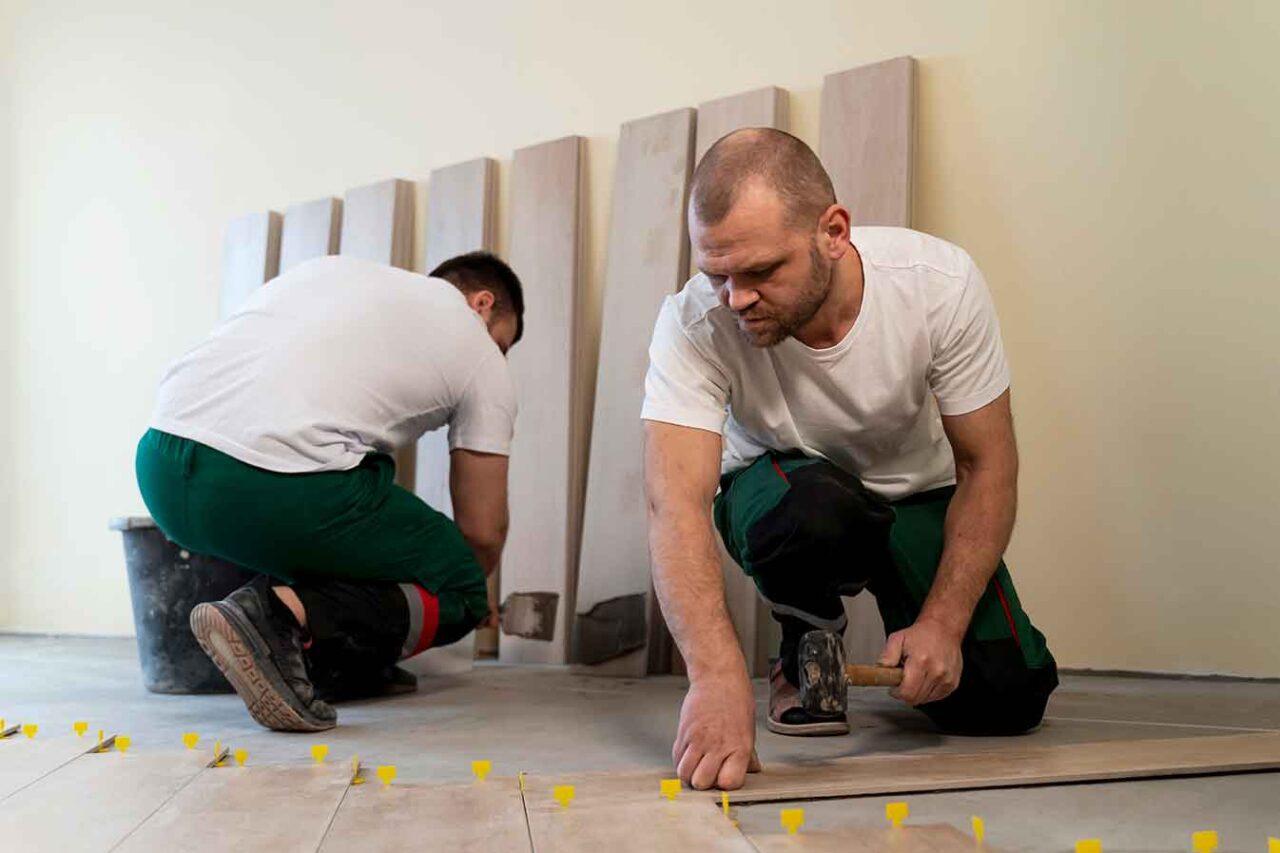Selecting the orientation for your vinyl, wood, or laminate flooring goes beyond mere functionality; it constitutes a design decision that wields considerable influence over the overall visual appeal of your space. How the flooring aligns with the room’s configuration, sources of light, and entryways can enhance the room’s attractiveness, create a sense of openness, and imbue it with a welcoming ambience. This comprehensive guide will explore the factors to consider when determining the ideal direction for your flooring installation.
- Main Light Source:
One of the fundamental principles of flooring direction is to align it with the primary source of light in the room. This alignment can profoundly impact the room’s ambience; It also minimizes the disruptions and irregularities that might occur if the flooring were oriented differently.
- Entrance Alignment:
Another strategic approach is to align the flooring with the room’s most frequently used entrance. This design choice serves multiple purposes. Firstly, it naturally guides the eye toward the door, creating a visual pathway that feels welcoming and aesthetically pleasing. It helps visitors intuitively navigate the space.
Secondly, aligning the flooring with the entrance enhances the overall sense of unity within the room. As people enter, their gaze naturally follows the direction of the flooring, creating a subtle, guiding effect that contributes to a harmonious atmosphere.
- Practical Considerations:
While aesthetics play a significant role in flooring direction, practicality should be noticed. If your room features multiple doors, windows, or architectural elements that complicate the installation process, choosing the most accessible path for installation is often more sensible.
Selecting the direction that minimizes complex cuts or adjustments can save you time and effort during the installation. This is especially crucial if you’re installing or working with limited resources. A straightforward installation process can lead to a more seamless and polished result.
- Optical Effects:
To refine your flooring direction decision further, you can leverage optical effects to achieve specific visual outcomes. These techniques can be beneficial in altering the perceived dimensions of a room:
- Lengthening the Room:
Consider laying the flooring boards parallel to the longest wall to make a room appear longer. This approach elongates the visual perspective and creates the illusion of an extended space. It’s an effective strategy for narrow rooms where you want to counteract the feeling of confinement.
- Widening the Room:
Conversely, if you wish to create the impression of a wider-looking room, lay the flooring boards perpendicular to the longest wall. This orientation can give the illusion of increased width, making the room feel more open and expansive. It’s especially beneficial for smaller spaces where a sense of spaciousness is desired.
- Diagonal Installation:
Diagonal installation is worth exploring for those seeking a unique and stylish look. Installing the flooring boards diagonally across the room adds visual interest and dynamism. This arrangement can make the space more dynamic and engaging, ideal for rooms where you want to make a design statement.
Consulting with Professionals:
While these guidelines provide valuable insights, it’s essential to recognize that every space is unique, and individual preferences vary. Therefore, it’s advisable to consult with a professional flooring installer. These experts possess the experience and knowledge to evaluate your circumstances, considering factors like room layout, lighting, and flooring material.
A professional installer can provide personalized recommendations tailored to your needs and goals. They can also offer practical advice on subfloor preparation, material selection, and installation techniques to ensure a successful and enduring result.
The Impact of Flooring Material:
In addition to the direction, the choice of flooring material also plays a significant role in your space’s overall design and functionality. Let’s briefly explore the implications of flooring material:
- Vinyl Flooring:
Vinyl flooring is known for its versatility and affordability. It comes in various styles and colors, making it suitable for multiple design preferences. Regarding direction, vinyl flooring can be laid in any order, as it is typically not influenced by grain patterns or wood-like aesthetics.</span>
- Wood Flooring
Whether hardwood or engineered wood, wood flooring often features distinct grain patterns and natural variations. The direction in which wood flooring is installed can emphasize these characteristics. Many lay wood flooring parallel to the longest wall for a traditional and timeless look. However, diagonal or herringbone patterns can create a more intricate and striking appearance.
- Laminate Flooring:
Laminate flooring is designed to mimic the look of natural materials, including wood and stone. Like wood flooring, laminate often features grain patterns. The choice of direction for laminate flooring depends on the desired visual effect. Parallel installation to the longest wall provides a classic look, while diagonal patterns can infuse energy and creativity into the space.
- Considerations for Tile Flooring:
In addition to the mentioned materials, tile flooring, such as ceramic or porcelain tiles, presents its unique considerations. Tile flooring can be laid in various patterns, and the installation direction depends on the tile size and room dimensions. Smaller tiles can create intricate mosaic patterns when laid diagonally, while larger tiles often appear more harmonious when installed parallel to walls or architectural features.
- Evolving Trends in Flooring Direction:
Flooring trends, like interior design trends in general, are continually evolving. While the abovementioned principles provide a solid foundation for selecting the right flooring direction, staying attuned to current design trends and innovations is essential.
Interest in unique and creative flooring installations has recently been resurgent. This includes using contrasting border patterns, mixed-direction installations, and even incorporating geometric shapes within the flooring design. These trends offer homeowners and designers additional avenues for personal expression and creativity.
- Maintenance and Longevity:
While the aesthetic aspects of flooring direction are crucial, it’s also important to consider maintenance and longevity. Proper installation and maintenance play a significant role in the lifespan of your flooring. Following the manufacturer’s recommendations for installation and care will ensure that your flooring retains its beauty and durability over the years.
Furthermore, take into account the flow of foot traffic within your area. Areas with high levels of foot traffic, such as entryways and hallways, tend to subject flooring to increased wear and tear. Opting for resilient flooring material and selecting an installation direction that aligns with these traffic patterns can significantly extend the lifespan of your flooring.
FAQS
In which direction should I lay my flooring?
When deciding on the orientation for laying your flooring, consider the room’s primary source of natural light and the visual impact you wish to achieve. Typically, a standard guideline is to install the flooring perpendicular to the longest wall or in alignment with the room’s length. This can create a visually pleasing and spacious feel. However, running the flooring parallel to the longest wall in certain situations, such as narrow hallways, may provide a more balanced look. Your choice should take into account these factors and your aesthetic preferences.
Should I lay my floor horizontally or vertically?
The decision depends on your design preferences and the room’s layout. Horizontal installation can widen a room, while vertical structure can give the illusion of higher ceilings. Consider the aesthetics and dimensions of your space when making your choice.
Which direction of flooring makes the room look bigger?
Generally, laying flooring lengthwise along the longest wall of a room creates the illusion of a larger space. This method generates a visual illusion of elongating the room and magnifying the sense of spaciousness within it.
Is it better to lay laminate flooring vertically or horizontally?
Whether vertical or horizontal installation depends on your room’s layout and design preferences. Horizontal installation can make a room more spacious, while vertical structure can emphasize its length. It’s a matter of personal style, so choose the best orientation that complements your space.


